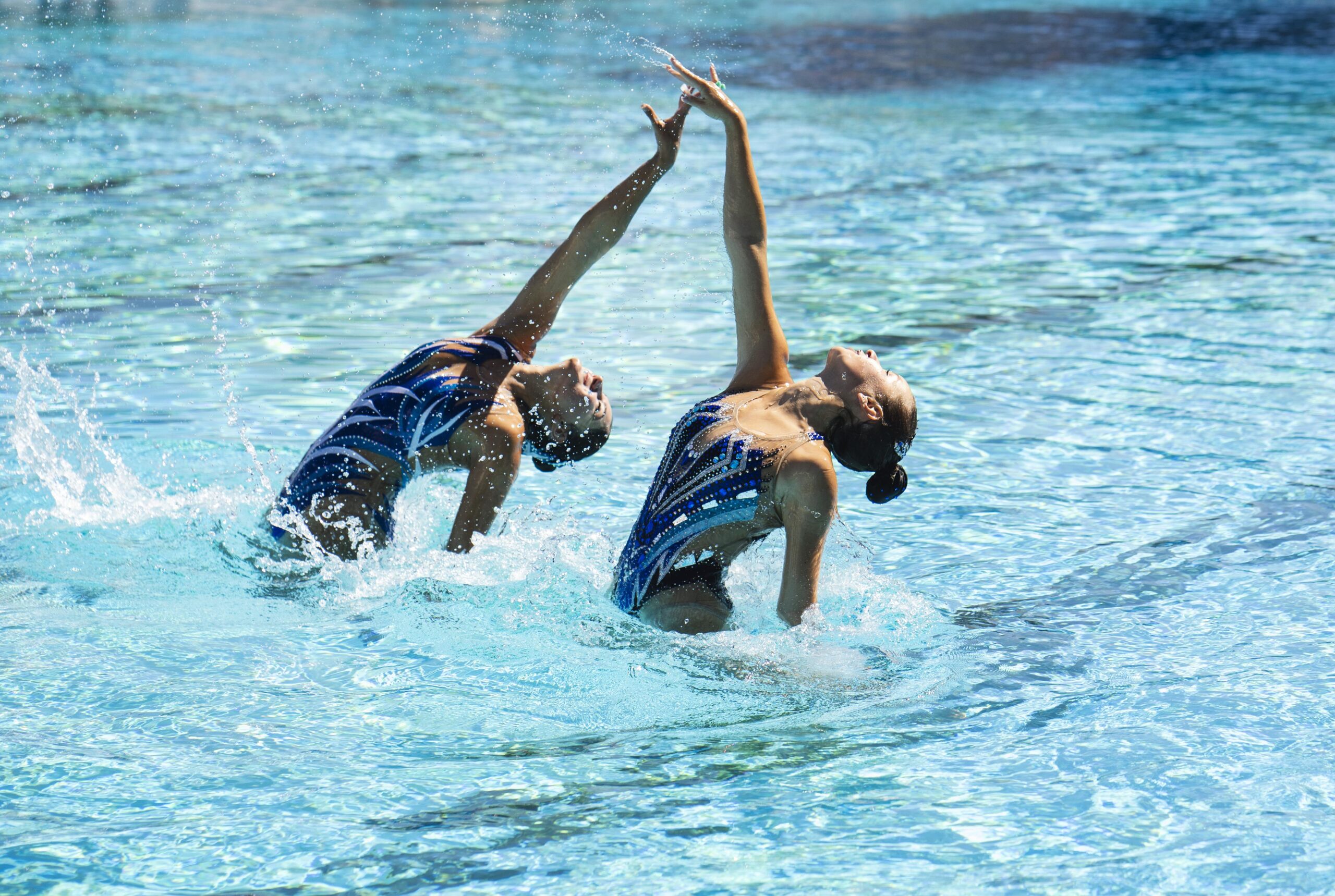
Water has always been a source of fascination, from its serene surfaces to the mysteries that lie beneath. But when combined with the grace of human movement and the rhythm of music, it transforms into a stage for one of the most enchanting sports: synchronized swimming. This article delves into the world of synchronized swimming, exploring its essence, the key elements that define routines, the various types of performances, and the dedication required to master this art.
The Essence of Synchronized Swimming
Synchronized swimming, often referred to as artistic swimming, is a captivating blend of swimming, dance, and gymnastics. It’s a sport where athletes perform choreographed routines in water, harmonizing their movements with music. This discipline demands a unique combination of strength, endurance, flexibility, and artistry, making it one of the most challenging aquatic sports.
Key Elements of a Routine
Every synchronized swimming routine is built upon certain foundational elements. These include:
- Figures: These are specific movements or positions that swimmers must execute. They form the building blocks of routines and are often used to assess an athlete’s skill level.
- Patterns: Patterns refer to the formations and transitions that teams create in the water. They can range from simple circles to intricate designs.
- Lifts: In team routines, swimmers often perform lifts, where one or more athletes are elevated above the water’s surface by their teammates.
- Musical Interpretation: The choice of music and how swimmers interpret it plays a pivotal role in the overall impact of the routine.
A successful synchronized swimming routine is a harmonious blend of figures, patterns, lifts, and musical interpretation, each contributing to the overall performance.
Types of Synchronized Swimming Routines
There are several types of routines in synchronized swimming, each with its own set of rules and objectives:
| Type of Routine | Description |
|---|---|
| Solo | A single swimmer performs, showcasing individual skill and artistry. |
| Duet | Two swimmers perform in harmony, emphasizing synchronization. |
| Trio | Three swimmers execute the routine, adding complexity to the synchronization. |
| Team | This involves a larger group of swimmers, often between four to eight, emphasizing teamwork and coordination. |
| Combination | A routine that combines elements of solo, duet, trio, and team performances. |
From solo to combination routines, synchronized swimming offers a diverse range of performances, each presenting its own set of challenges and opportunities for artistic expression.
Training and Preparation
Behind every mesmerizing routine lies countless hours of rigorous training. Athletes hone their skills, from mastering basic figures to perfecting complex patterns. Training often includes underwater breath control exercises, strength training, and practicing routines repeatedly to ensure flawless execution. Additionally, selecting the right music and choreographing the routine is a meticulous process that can take months.
The beauty of synchronized swimming routines is a testament to the dedication, hard work, and meticulous planning that goes into every performance.
Scoring Synchronized Swimming Technical Routines
Synchronized swimming technical routines are meticulously judged to ensure fairness and accuracy. The scoring process is comprehensive, taking into account various aspects of the performance. Here’s a breakdown of how these routines are scored:
- Execution
- Focuses on the movement’s execution, excluding the required elements.
- Assesses the synchronization of swimmers both to the music and their teammates.
- Each of the five judges gives a score out of 10.
- The highest and lowest scores are discarded, and an average of the remaining three scores is calculated. This average is then multiplied by three to produce the overall execution score.
- Impression
- Judges evaluate based on four factors:
- Difficulty of the routine’s movements (excluding the required elements).
- Choreography of the routine.
- Musical interpretation.
- Presentation of the routine.
- Each judge provides a score out of 10.
- The highest and lowest scores are discarded, and an average of the remaining three scores is determined. This average is then multiplied by three to derive the overall impression score.
- Elements
- This score is exclusively based on the performance of the five required elements in the routine.
- Each judge gives a score out of 10 for each of the five elements.
- Individual element scores are determined by discarding the highest and lowest scores, calculating an average of the remaining three scores, and then multiplying that average by the element’s degree of difficulty.
- The sum of these five element scores is divided by the sum of the degrees of difficulty. This result is then multiplied by 4 to produce the final elements score.
To determine the overall score of the routine, the scores from the execution, impression, and elements categories are summed up.
The Global Stage
Synchronized swimming has graced many international platforms, from the Olympics to World Championships. These events showcase the pinnacle of talent in the sport, with teams from around the world competing for the coveted titles. The evolution of the sport has been evident, with routines becoming more intricate and athletes pushing the boundaries of what’s possible in the water.
International competitions celebrate the excellence of synchronized swimming, highlighting the sport’s evolution and the relentless pursuit of perfection by athletes worldwide.
To conclude, from the foundational elements that shape every routine to the global platforms that showcase the best in the sport, synchronized swimming continues to captivate audiences with its unique blend of aquatic choreography. Whether you’re a seasoned enthusiast or new to the sport, there’s no denying the magic that unfolds when swimmers take to the water, moving in perfect harmony.